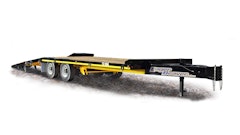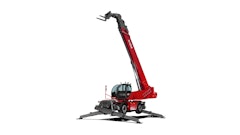Maintaining an efficient inventory management strategy is a valuable way for fleet managers to save money and time. When addressing inventory management, you must consider several major factors. Perhaps the most important is recognizing that inventory costs extend well beyond the initial purchase price of materials.
Inventory management must take into account the additional costs for handling and storage; different stock types; accurate estimates of the replenishment quantity; and appropriate reorder times. Furthermore, the effort and sophistication needed for a successful inventory strategy should be balanced with the size, complexity and cost of the inventory to be handled. Following are five key factors you should consider when formulating or re-creating your inventory management plans.
Carrying costs
Let's say a fleet typically has 100 containers of oil or grease in inventory at $200 per container. You would think that the inventory cost would be $20,000, but it's not. Additional carrying costs will actually drive the total cost of purchasing and maintaining this inventory closer to $25,000 or $30,000.
Carrying costs are associated with holding or "carrying" inventories over time. In other words, the fleet has to pay more money on top of the purchase price for things such as storage, insurance, extra equipment and personnel.
For fleets of any size, you must factor in additional expenses for such items as forms, clerical support, processing, borrowing and taxes. While the carrying costs vary with specific situations, they are often conservatively estimated at 18 to 25 percent above the value of the inventory.
Beyond the added carrying costs, having excess inventory could result in other inconveniences, especially for small fleets with limited storage capacity. Storing excess inventory can drive up costs, plus take up valuable space needed for equipment maintenance.
Small fleets also tend to have a smaller staff, often relying on one person to handle various day-to-day activities, such as accounting, data processing and ordering. In this case, it is important to accurately manage the inventory overflow to keep levels where they should be and to maximize employee productivity.
Understand your stock
Another factor impacting the efficiency of your inventory management strategy is the inventory's role in your fleet.
Inventory is composed of working stock and safety stock. Working stock supports day-to-day operations and will continuously cycle up and down as material is consumed and replenished.
Safety stock serves as protection against material shortages caused by unexpected events, such as delayed replenishment or an unusually high consumption rate. Under ideal operating conditions, safety stock is not used. You should regard safety stock like the insurance policy on a car — you hope you'll never have to use it, but it would be very risky to be without it.
Replenishment quantity
How much should a fleet buy when replenishing inventory?
The most economic replenishment quantity, commonly called the EOQ (Economic Order Quantity), represents the lowest total sum cost of total inventory and inventory acquisition costs (order placement costs, invoice processing costs, payables costs, freight, etc.). Large replenishment quantities translate into fewer replenishment orders but larger inventories. Small replenishment quantities will reduce inventories but will increase the number of replenishment orders needed.
The EOQ is a function of the consumption rate, carrying cost, inventory value and inventory acquisition costs.
Reorder point
The appropriate time to reorder inventory can be determined by how quickly the inventory is being consumed and the order lead time designated by the supplier.
For example, if a fleet consumes 10 gallongs of oil per day and it takes five days to receive material from the supplier, reordering should take place when the working stock gets to 50 gallons. If the inventory management system is working to maximum efficiency, the working stock will reach zero as the replenishment arrives.
Inventory cost reduction
Reducing inventory and related total inventory costs do not always go hand-in-hand. So how can fleets further trim inventory costs without the risk of running out of necessary materials? Perhaps the most basic element is to work with your supplier(s) to shorten cycle order fulfillment times to minimize the need for excess safety stock.
Another avenue to achieve cost savings is through product consolidations. Multiple individual safety stocks can be combined into one typically smaller safety stock. Consumption rates for consolidated products are higher, making smaller order quantities more economical. The higher consumption rates are also typically more easily rated, which can translate into further safety stock reductions with no increased risk of running out.
For any fleet, an efficient inventory management strategy can drive cost savings and productivity enhancements. By paying close attention to the factors mentioned above, you can build and sustain an efficient system for your operation.
Ken Cicora is fleet marketing manager with ExxonMobil Lubricants & Specialities.



























